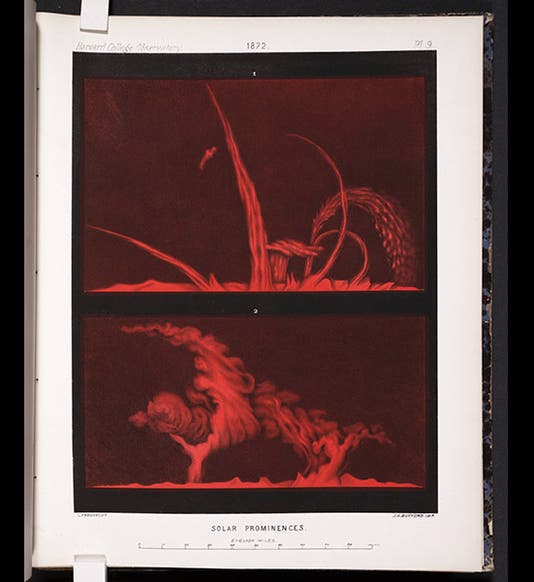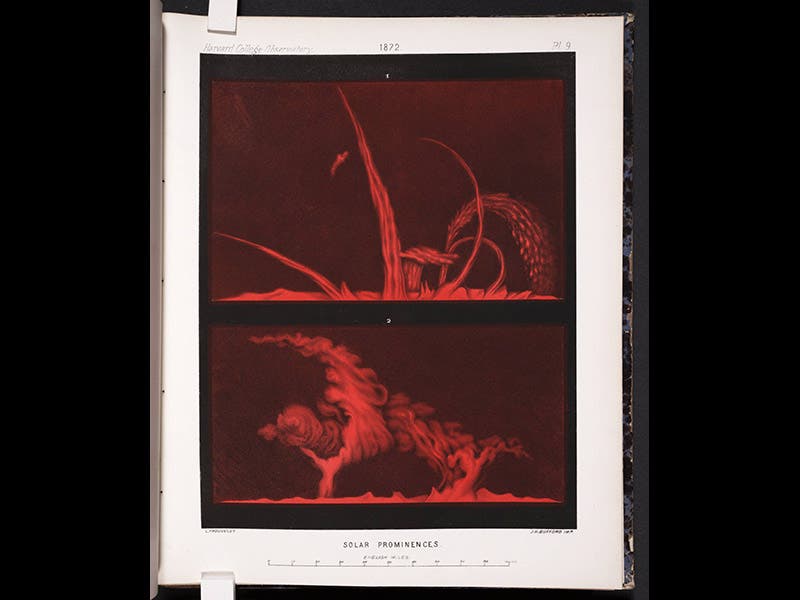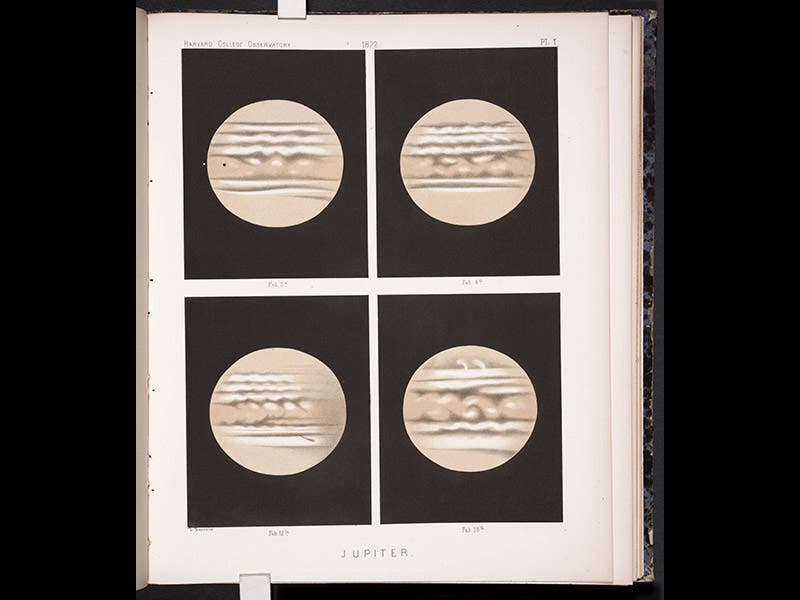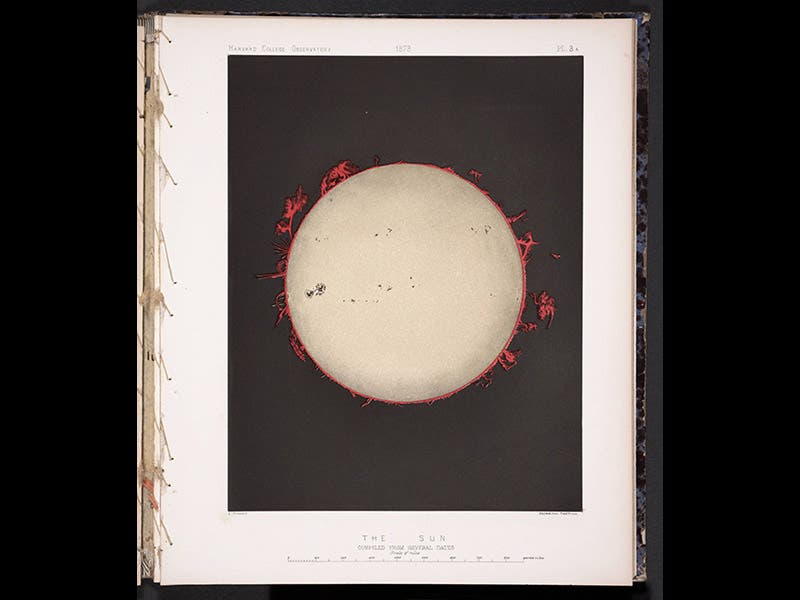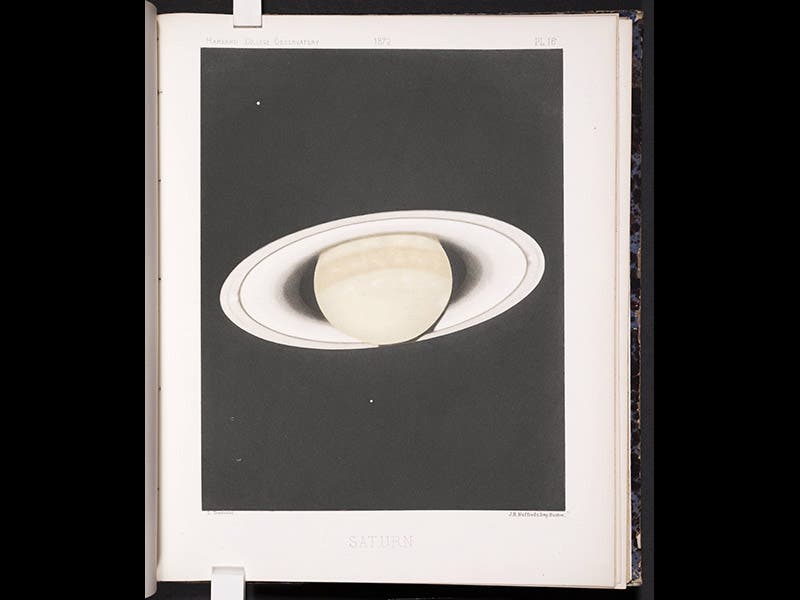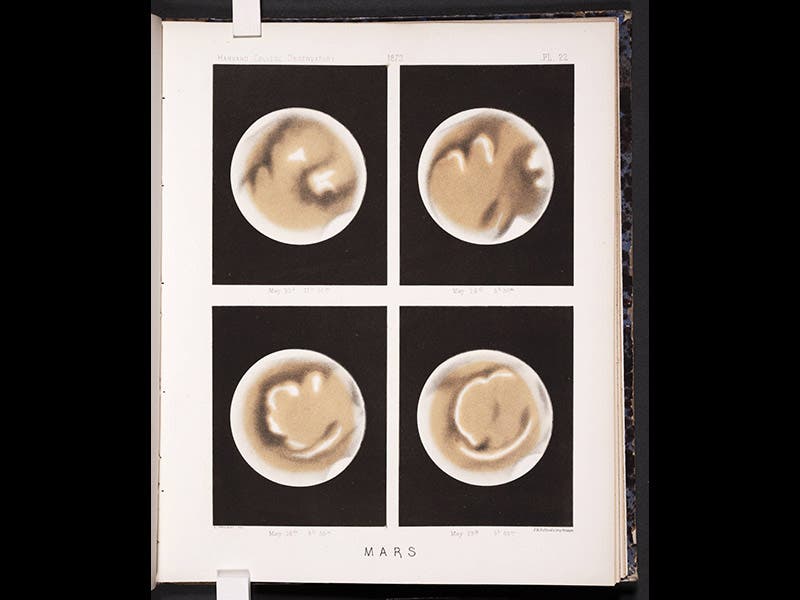Scientist of the Day - Etienne Trouvelot
Etienne Trouvelot, a French painter turned American astronomical artist, was born Dec. 26, 1827. Trouvelot came to the U.S. in 1850 and moved to Boston, where he was employed as a nature artist by Louis Agassiz at Harvard. In 1870, Trouvelot bought a small telescope and started drawing astronomical objects. His artwork came to the attention of the director of Harvard College Observatory, and Trouvelot was given access to the 15" refractor that Harvard had acquired from Germany. In 1876, a collection of Trouvelot's lithographs were published in the Annals of the Observatory. We reproduce six of those lithographs above, depicting, in order: solar prominences, four views of Jupiter, the Sun, Saturn, four views of Mars, and the Andromeda nebula.
Five years later, Trouvelot published much larger versions of these lithographs, which are quite the collector's item. We do not own the large 1882 set, but you can see all 15 of the large prints on the New York Public Library website.
Trouvelot then returned to France as astronomer to the Meudon Observatory, one of the finest observatories in France (an amazing promotion, since he had no professional qualifications). Unfortunately for his American reputation, Trouvelot in his early days in the U.S. had dabbled in silk-worm culture, and he brought back from France another silk-producing caterpillar to see if they could be hybridized with the silkworm. The imports were gypsy moth larvae. Some of the insects escaped from his back yard, and although he tried to alert authorities, nothing was done, until the gypsy moth had spread and become the scourge of the East Coast. Trouvelot is not remembered fondly by those who have had to grapple with this unsightly backyard menace.
Dr. William B. Ashworth, Jr., Consultant for the History of Science, Linda Hall Library and Associate Professor, Department of History, University of Missouri-Kansas City

